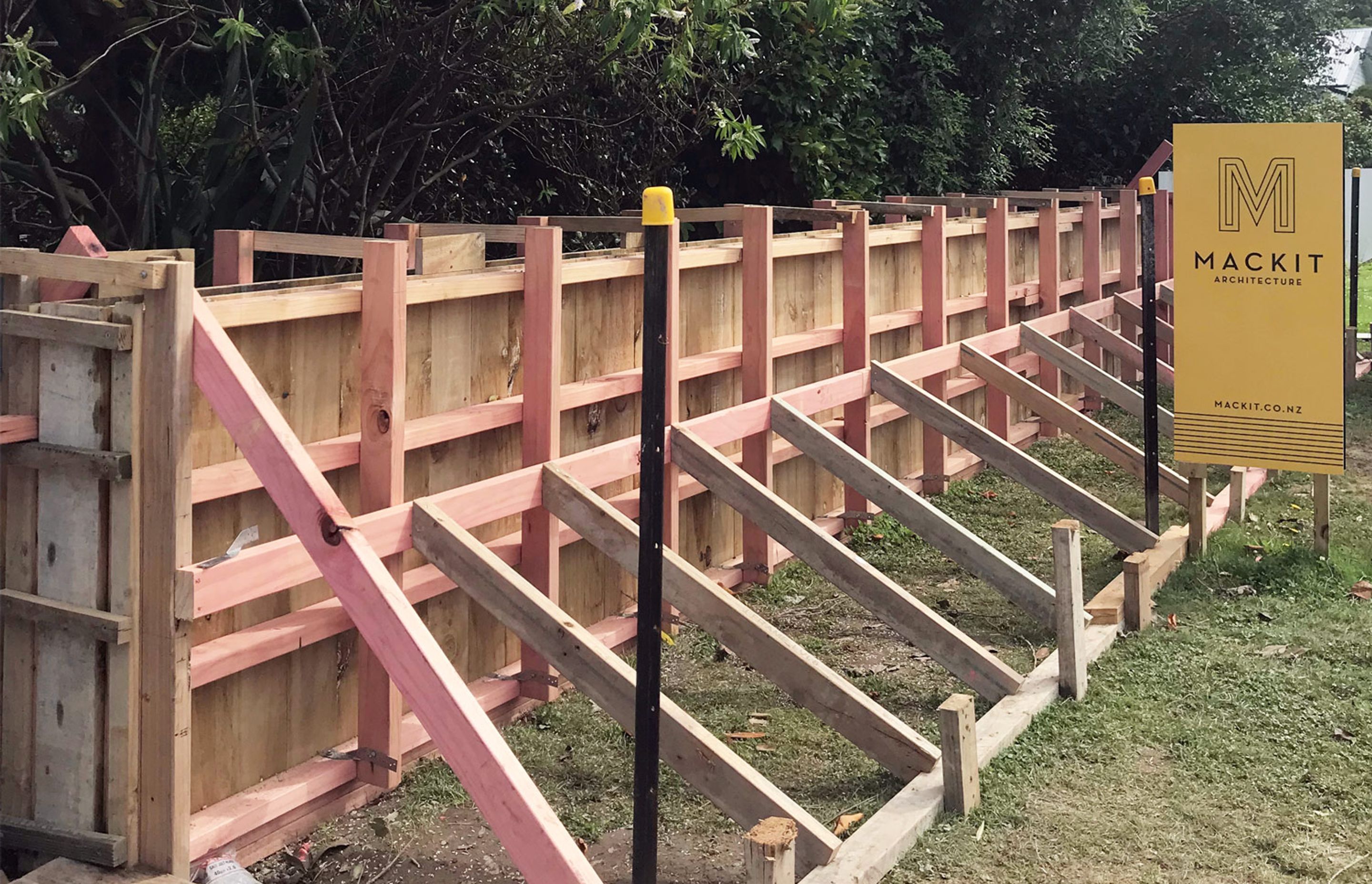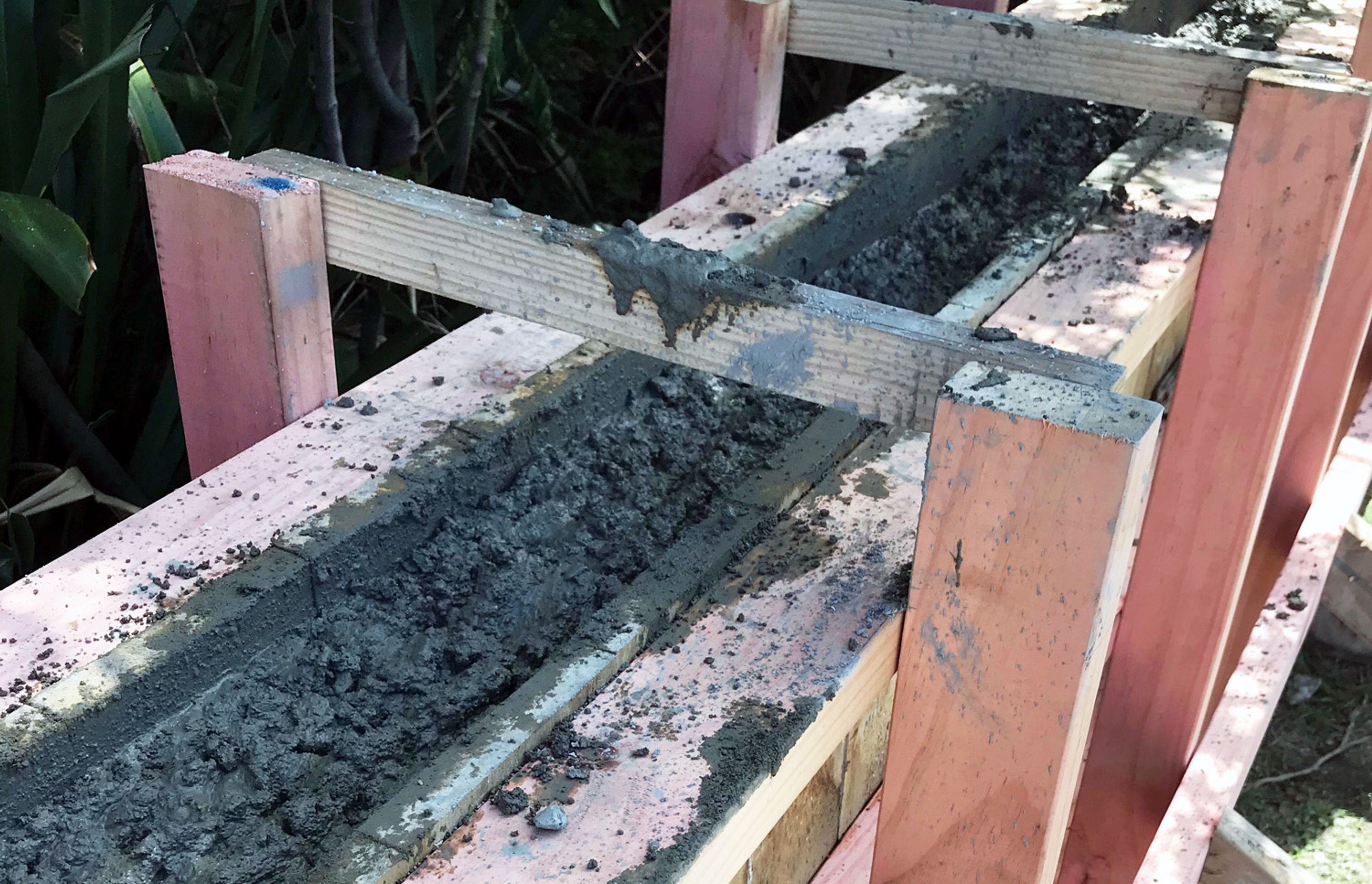Watching the clock: obtaining building consent - and what to do while you wait!

A pitfall of being your own client, is that sometimes your project gets pushed to the bottom of the list. We were so busy with client projects towards the end of 2017, that we didn’t manage to get the Habitat plans submitted to Council, for building consent, until January. Meanwhile, we had our team of builders ready to make a start in the New Year, and we needed to keep them busy.
One of the first things we would crack into was fencing – both the boundary fence and the front formed concrete wall. The latter is an extremely time-consuming process, but the result is pretty special. The boxing, which is the mould that the concrete would be poured into, is very time consuming work to do correctly, to ensure there is no risk of ‘blow out’ when the extreme forces of wet concrete are applied. Also, because we wanted the imprint of the timber in the finished product, the boards had to be carefully placed to ensure they would look good once revealed.
It was over 30 degrees on the day of the concrete pour, and the team worked like a well-oiled machine bucketing the concrete into the boxing. After letting it set for a few days, the boxing was removed to reveal the finished result – and it looked incredible. One thing to consider, is that although it is time consuming to prepare, concrete is an extremely low maintenance material. No painting or staining required!
Meanwhile, we were still waiting for the building consent to be approved. Councils work on the 20 working day premise (4 weeks) to process a consent, but as soon as they request any further information (RFI), that clock stops until you supply the information. We have quite an amount of specific design engineering in this project, and the council can request a Peer Review of this work, which is what happened in this project given the complexity. What that means is that another independent engineer needs to review the work of our original engineer, and agree with the calculations.
We were fortunate that our fantastic engineers at Sullivan Consulting arranged for another consulting engineer to do this for us, but it did take time. Once we submitted the extra information, there was still a wait for things to get processed. Meanwhile, the guys on site were finishing up the preliminary work and itching to get started with structural work. Finally we were told we could pick up the approved consent – the receptionist said she had never seen such a thick consent folder! Now it was time to really crack into the build, starting with the foundations.
Our tips: It can be frustrating waiting for building consent, but it is best to focus on what you can do rather than what you can’t. This is a good time to ensure your building contract is in place (it is a legal requirement for all works over $30,000) and your budget and finance are finalised. Insurance is also crucial – for new builds it is usually the responsibility of the contractor to put contract works insurance in place.
For renovations however, insurance is usually the owners responsibility. Other things you could do are planting around the perimeter to get a head start on establishing the site, building and painting fences, and any other non-consent required activities.



